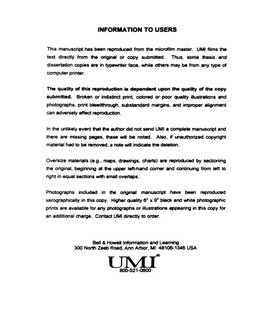| dc.contributor.advisor | Roegiers, Jean-Claude, | en_US |
| dc.contributor.author | Bloch, Mauro. | en_US |
| dc.date.accessioned | 2013-08-16T12:30:44Z | |
| dc.date.available | 2013-08-16T12:30:44Z | |
| dc.date.issued | 1999 | en_US |
| dc.identifier.uri | https://hdl.handle.net/11244/5872 | |
| dc.description.abstract | Knowledge of the in-situ stress field is often critical in several aspects of well design, being one of the most important parameters in reservoir management: wellbore stability, hydraulic fracture propagation and production optimization. The economic importance of reliable in-situ stress measurements can be gaged by the high cost involved in decisions like: defining the well locations and attitudes with respect to the target reservoir; determining the proper drilling fluid density; sand control in poorly and unconsolidated reservoirs; and, optimum production and recovery. | en_US |
| dc.description.abstract | Recent research done by the oil industry has improved the accuracy of such in-situ stress measurements. Equipment and methodologies have been developed in the last 50 years, based upon physical principles that would allow the computation of the stress field from rock samples relaxation, or from measurements performed on the rock formation itself in the field. This study concentrates on a core-based technique: the anelastic strain recovery (ASR), with emphasis on the stress magnitudes determination only. | en_US |
| dc.description.abstract | Recognizing the potential relevance of pore pressure effects when dealing with rocks, a new procedure is presented for simulating the rock anelastic strain behavior using a fully coupled poroviscoelastic model. One needs to realize that the fluid that is allowed to escape during core retrieval introduces a contraction which could mask or even overshadow the rock expansion due to the stress relief. Different rocks and field conditions were simulated by the model indicating that, depending on the rock permeability and the initial stress field, pore pressure diffusion can provide an explanation for observed rock contractions. | en_US |
| dc.description.abstract | The procedure has been applied to field samples from Brazil's Northeast onshore wells, where the purely viscoelastic approach was unable to compute the stress magnitudes due to core shrinkage. Compression tests were carried out in the laboratory in order to determine the rock elastic, viscoelastic and poroelastic parameters necessary for the rock characterization in the poroviscoelastic model. The obtained strain curve-fittings were very reasonable, and the computed stresses were confirmed via other sources of information: regional shallow earthquakes and microfracturing. | en_US |
| dc.description.abstract | Anelastic strains are caused by the formation of a microcrack population in the core, due to the stress relief after coring, when the rock samples expand in all directions. Modelling the rock behavior for computing the in-situ stress magnitudes from ASR focused on the viscoelastic aspects of the physical process. Nevertheless, core contraction has been reported in many occasions, indicating that other processes may affect the rock behavior under specific conditions, which are not well represented by a viscoelastic approach. | en_US |
| dc.description.abstract | In spite of the simplifying assumptions (plane strain and radial fluid flow are two of the most important ones), the method was able to fill a gap by considering coupled poroviscoelastic effects in the anelastic process. Further investigations are proposed, like adding thermal effects and a more careful examination of the rock experimental creep behavior, in order to improve the model representativeness. | en_US |
| dc.description.abstract | A new formulation is also proposed for computing the in-situ stress magnitudes based on the back-analysis of anelastic strain measurements: the rock anelastic strains generated by the poroviscoelastic model are adjusted to experimental strain measurements through a multidimensional fitting algorithm, leading to the original stress magnitudes by optimizing the curve-fitting. The validity of this approach was checked using a synthetic example, confirming the method reliability. | en_US |
| dc.format.extent | xxvi, 303 leaves : | en_US |
| dc.subject | Fracture mechanics. | en_US |
| dc.subject | Viscoelastic materials. | en_US |
| dc.subject | Rock mechanics. | en_US |
| dc.subject | Engineering, Petroleum. | en_US |
| dc.title | In-situ stress determination in porous formation. | en_US |
| dc.type | Thesis | en_US |
| dc.thesis.degree | Ph.D. | en_US |
| dc.thesis.degreeDiscipline | Mewbourne School of Petroleum and Geological Engineering | en_US |
| dc.note | Major Professor: Jean-Claude Roegiers. | en_US |
| dc.note | Source: Dissertation Abstracts International, Volume: 60-11, Section: B, page: 5749. | en_US |
| ou.identifier | (UMI)AAI9949698 | en_US |
| ou.group | Mewbourne College of Earth and Energy::Mewbourne School of Petroleum and Geological Engineering | |
